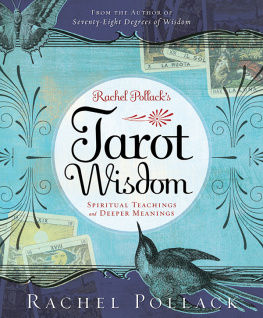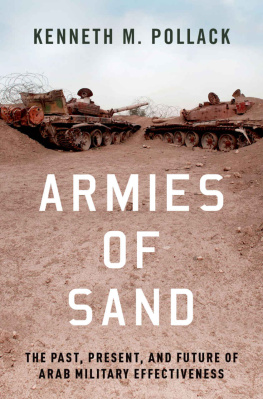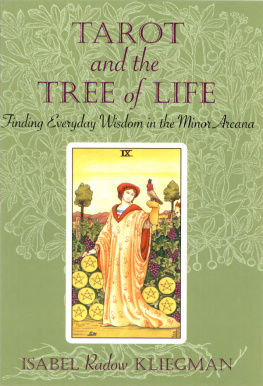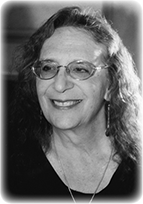Rachel Pollack is a poet, an award-winning novelist, a world authority on the modern interpretation o f Tarot cards, and a Tarot card artist. Her novel Godmother Night won the 1997 World Fantasy Award. Unquenchable Fire, her earlier novel, won the Arthur C. Clarke Award.
Her thirty books include twelve books on the Tarot, including Seventy-Eight Degrees of Wisdom , often called the bible of Tarot readers, and she is the creator of the Shining Tribe Tarot . Her books have been published in fourteen languages. Rachel lives in New Yorks Hudson Valley.
Llewellyn Publications
Woodbury, Minnesota
Copyright Information
Rachel Pollacks Tarot Wisdom 2008 by Rachel Pollack.
All rights reserved. No part of this book may be used or reproduced in any matter whatsoever, including Internet usage, without written permission from Llewellyn Publications, except in the form of brief quotations embodied in critical articles and reviews.
As the purchaser of this e-book, you are granted the non-exclusive, non-transferable right to access and read the text of this e-book on screen. The text may not be otherwise reproduced, transmitted, downloaded, or recorded on any other storage device in any form or by any means.
Any unauthorized usage of the text without express written permission of the publisher is a violation of the authors copyright and is illegal and punishable by law.
First e-book edition 2014
E-book ISBN: 9780738722405
first edition
Second Printing, 2009
Author photo by Joyce Tudrin
Book design and editing by Rebecca Zins
Cover design by Ellen R. Dahl
Line drawings by Llewellyn Art Department
Tarot decks reproduced with kind permission of Lo Scarabeo: Tarot of Marseille, Visconti Tarot, The Egyptian Tarot, Sola-Busca Tarot.
Rider Tarot card illustrations are based on those contained in The Pictorial Key to the Tarot by Arthur Edward Waite, published by William Rider & Son Ltd., London, 1911.
The Shining Tribe Tarot and The New Golden Dawn Ritual Tarot are reproduced by permission of Llewellyn Publications.
Llewellyn Publications is an imprint of Llewellyn Worldwide Ltd.
Llewellyn Publications does not participate in, endorse, or have any authority or responsibility concerning private business arrangements between our authors and the public.
Any Internet references contained in this work are current at publication time, but the publisher cannot guarantee that a specific reference will continue or be maintained. Please refer to the publishers website for links to current author websites.
Llewellyn Publications
Llewellyn Worldwide Ltd.
2143 Wooddale Drive
Woodbury, MN 55125
www.llewellyn.com
Manufactured in the United States of America
Dedication
To Zoe Matoff, who set up the Intensive classes and then suffered through all the months of the book that came out of themand to all the wonderful people who gave their time and knowledge and enthusiasm to the Intensive workshops, especially Carey Croft, Barbara Eres, and Scott Martin.
Nothing is learned except through joy .
Ioanna Salajan
Contents
Introduction
I first encountered Tarot in early 1970 when a friend read my cards. By the time you read this, I will have worked, studied, and played with Tarot for more than forty years, the total of the numbered cardsace through ten in each of the four suitsin the part of the deck known as the Minor Arcana. Because of Tarot, I have learned about spiritual and esoteric traditions I did not even know existed. I have seen many subtle surprises and truths in human behavior and have come, I think, to a better understanding of subjects like free will and even what we mean by sacred.
Having written stories all my life, I became a nonfiction writer to tell people what I understood of the cards (my first Tarot book and my first novel were published at the same time). Through Tarot, I have traveled to many countries at the kind invitation of people who wanted me to teach. And I have met dear friends who have remained close to me for decades, no matter where we live.
That first book on Tarot, published in two parts in 1980 and 1983, was Seventy-Eight Degrees of Wisdom . It came out of a weekly class I was teaching in Amsterdam, in the Netherlands, where I lived for
nineteen years. It seemed to me that I had developed an approach to the cards that I had not seen anywhere else at that time. Part of that approach involved using readings as the primary mode by which we entered the deepest levels of the cards meanings, including spiritual and metaphysical truths and secrets. At that time, people tended either to do readings with formulaic meanings for each card or else study the cards according to a strict system of occult ideas. My own approach stressed psychology, myth, esoteric philosophy, and the interpretation of the cards that came up in readings as moments in someones life, or a story, or a dream.
Over the years, many people have told me they found Seventy-Eight Degrees of Wisdom of great benefit. And yet, much has happened in Tarot since then. A vast number of new decks have been published, including my own Shining Tribe Tarot . Brilliant interpretations have emerged, along with decks and books that link the cards to specific mythologies or esoteric traditions. Material that had been kept secret for generations was finally published. We also know a great deal more about Tarots history, so that statements I made in Seventy-Eight Degrees of Wisdom for example, that regular playing cards derived from TarotI now know as simply not true.
Because so much has happened and my own ideas have developed so much, I thought it might be time to do a new book that would once again give a detailed interpretation of the entire deck, card by card. Actually, just as Seventy-Eight Degrees came out of my Amsterdam class, so Tarot Wisdom comes from a series of day-long workshops I taught called Tarot Intensives. In these classes, we spent an entire morning or afternoon looking at just one or two cards, bringing in a whole range of approachesfrom comparison with many decks, to a look at how the historical meanings of the cards have evolved over the past two centuries, to readings inspired by the core ideas of a single card.
One of the special things we did in the Intensives was to go back and see what the early cartomancers (people who do readings with cards) gave as the meaning for each card. In this we were greatly aided by a recent book by Paul Huson, whose early work on Tarot, The Devils Picture-Book , was one of my favorites when I was first learning the cards.
Husons new book, Mystical Origins of the Tarot , is one of a group of exciting new works by various authors that attempt to bridge the gap between historical scholarship on Tarot and the tradition of occult or spiritual interpretation. Knowledge of Tarot history has taken huge leaps in the last decade. We now know far more about not only the origin of the deck but also the likely source of most of the pictures. At one point, the people doing this research seemed to have a kind of anti-occult agenda. That is, if they could disprove the claims of Tarot having a secret origin as a mystical doctrine, then all of the concepts and symbolism built up around it would be seen as meaningless. All of us who believe we see spiritual truth in Tarot cards would have to realize that its just nonsense, that Tarot was invented as a game, nothing more, and all the rest is foolish fantasy. In reaction against this extreme view, some Tarotists have steadfastly ignored historical evidence. To them, Tarot comes from ancient Egypt, or Atlantis, or wherever else they have heard (see below for some of the examples), no matter what all those researchers say.
























